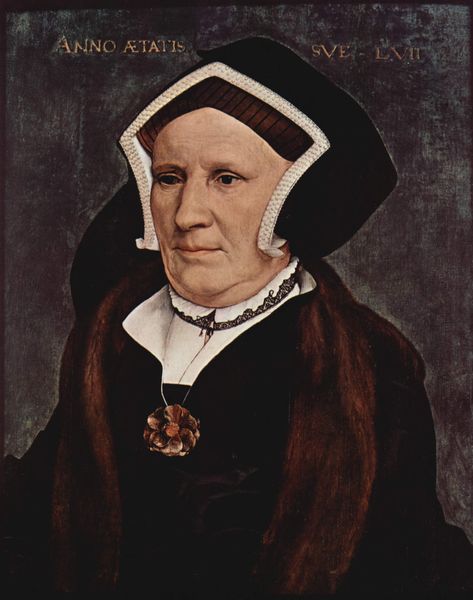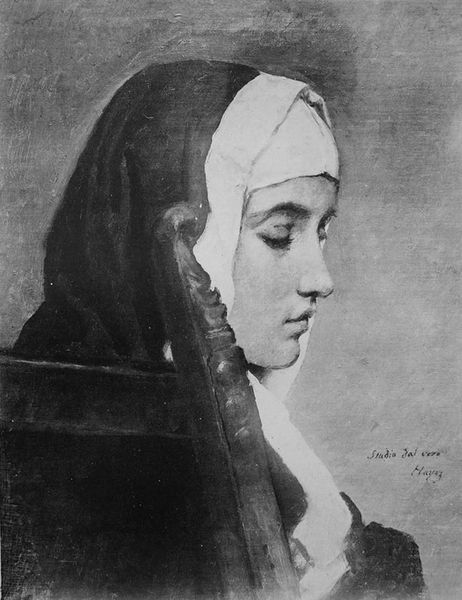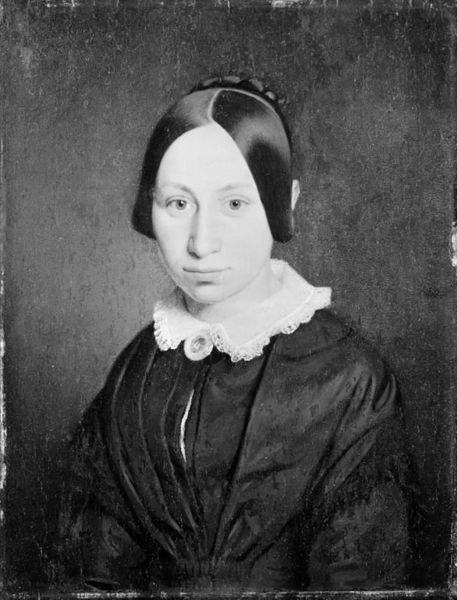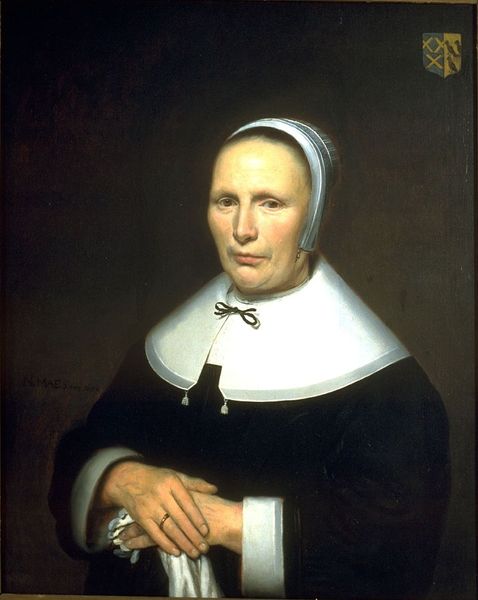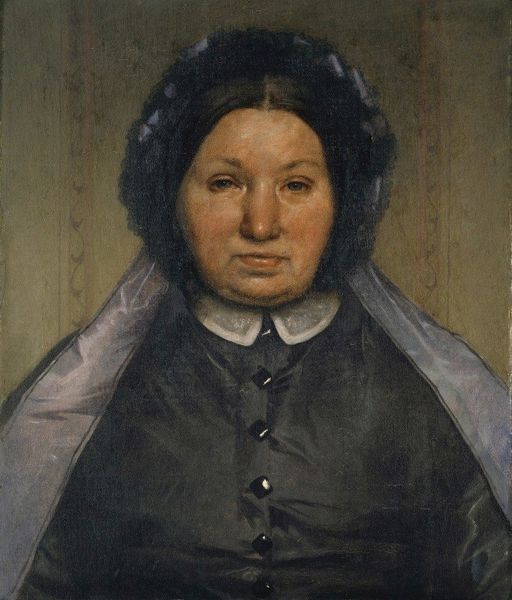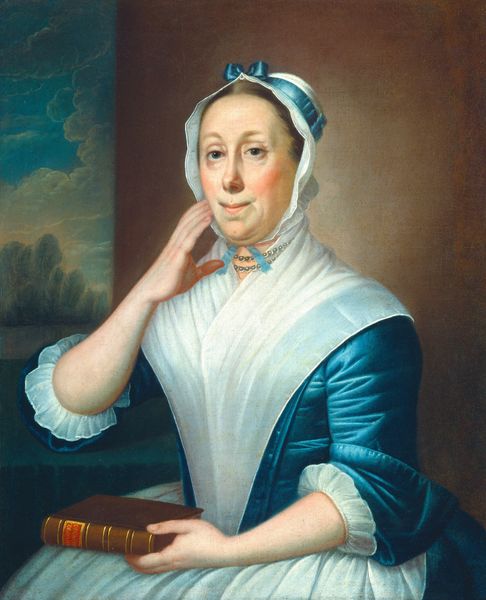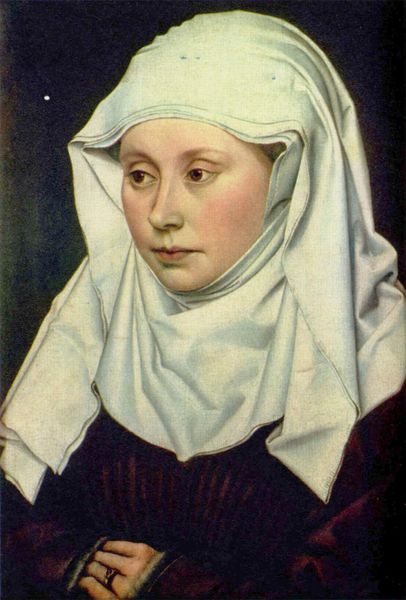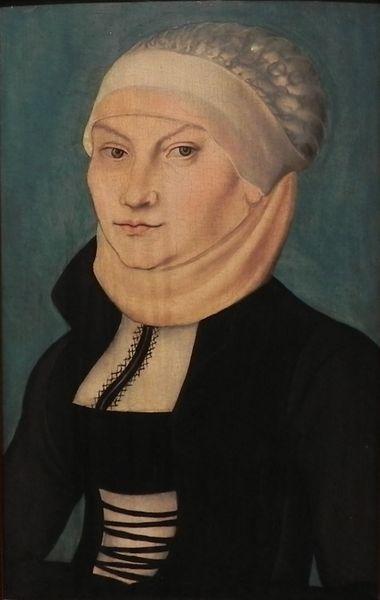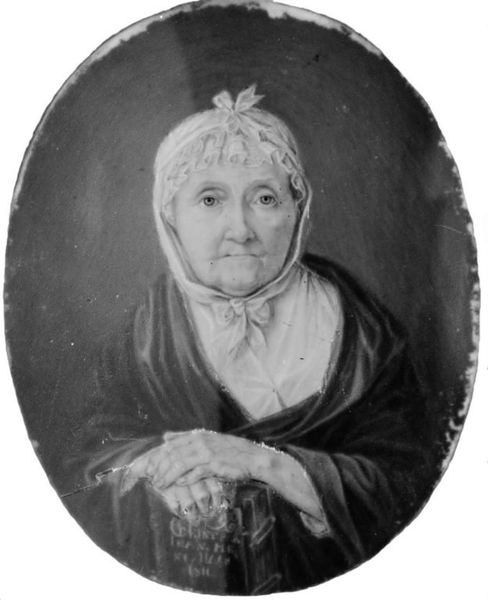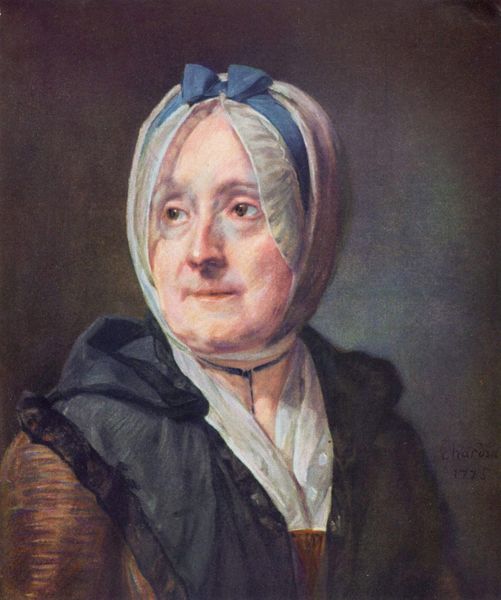
painting, oil-paint
#
portrait
#
painting
#
oil-paint
#
northern-renaissance
#
realism
Dimensions: 34 x 45 cm
Copyright: Public domain
Editor: So, here we have what is believed to be a portrait of the artist’s wife, created by Hans Holbein the Younger around 1517. Painted with oils, she seems…reserved, maybe a little melancholy? What symbols do you see at play here, shaping our understanding? Curator: Immediately, the headdress strikes me. Head coverings often signify marital status and modesty. The tight lacing of her bodice could symbolize restraint or virtue, but also perhaps societal expectations. The joining of hands? It invites a host of interpretations – commitment, humility, resignation... Have you considered what’s not readily apparent? Editor: You mean beyond the surface? Like, what this image *omits* about her identity, aside from just being “the artist’s wife”? Curator: Precisely. Holbein excelled at realism, yet the details he *chooses* to highlight, the colors he favors – these are crucial. Dark colours signify gravity and dignity. Look at the precise rendering of her face, contrasted against the less defined background. Where does he want our gaze to linger and why? Editor: It almost feels like he’s presenting a societal role more than a person. I wonder what a contemporary viewer might have taken away versus how we react today. Curator: Excellent question. Back then, such a portrait served as a statement – about the sitter's status, virtue, family honor, even Holbein's own talent. Her gaze avoids direct engagement; women’s gazes are culturally complicated. What does that indirectness tell us about her prescribed role and expectations in society? Editor: I guess I never considered how much a portrait could be a carefully constructed statement beyond just a likeness. Thanks! Curator: And I appreciate your astute observation on the sitter’s reserved gaze; portraits are records of appearances, but often simultaneously reveal societal attitudes.
Comments
No comments
Be the first to comment and join the conversation on the ultimate creative platform.


